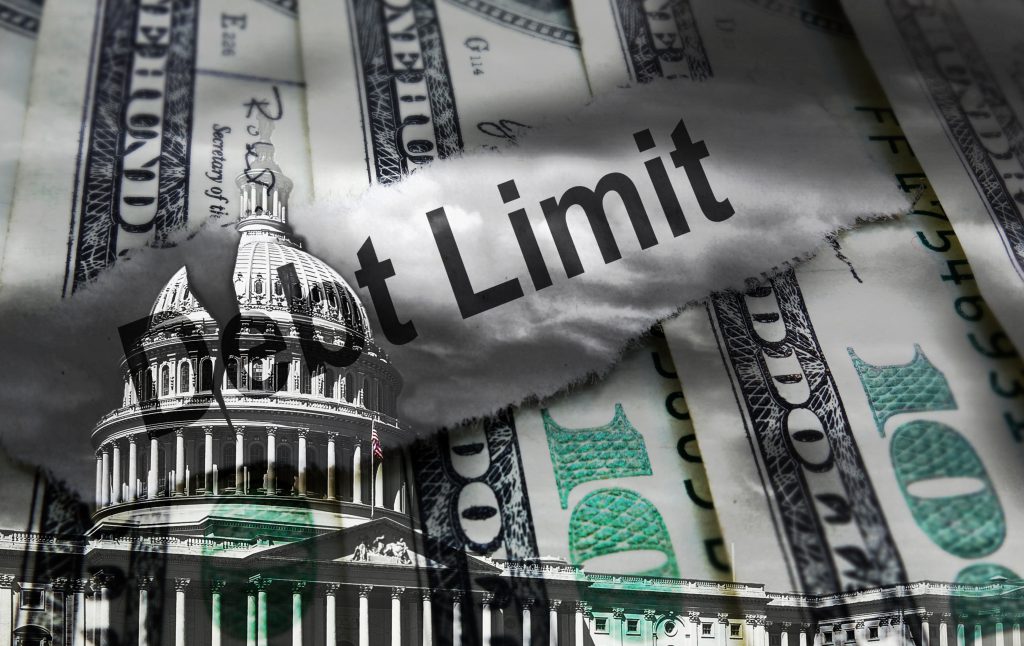
After weeks of high-stakes negotiations, U.S. President Joe Biden and House Republicans have arrived at a preliminary agreement to manage the debt limit and curtail spending. Though it’s far from finalised, this agreement has started to reshape the political and economic landscape. Leaders from both parties now face the challenge of swaying their members to back the agreement, which includes elements that don’t entirely align with either party’s agenda.
The specifics of the deal were disclosed on Sunday night. Both parties have now turned their attention to highlighting the elements that resonate with their respective political narratives.
Essentially, the agreement has several key points that may impact various sectors of the economy and, by extension, the stock market:
- The debt limit will be suspended until January 1, 2025, effectively removing it as a topic of contention in the 2024 presidential election.
- Non-defence spending will remain largely unchanged in fiscal 2024 and increased by 1% in fiscal 2025.
- $886 billion will be allocated towards defence, with $121 billion going towards veterans’ medical care and $637 billion to other non-defence programs.
- The deal ensures full funding for veterans’ health care and increases support for the toxic exposure fund by nearly $15 billion.
- It proposes to temporarily broaden work requirements for certain adults receiving food stamps.
- It includes recalling $30 billion in unspent funds from the Covid-19 relief packages.
- It cancels funding for new IRS agents for the fiscal year 2023.
- It plans for borrowers to start repaying their student loans by the end of summer.
- The agreement maintains the Inflation Reduction Act’s climate and clean energy provisions.
- It also aims to expedite the establishment of the Mountain Valley Pipeline, a natural gas pipeline in West Virginia.
As investors, the terms of this agreement offer several potential opportunities to adjust portfolios and harness the evolving economic landscape:
Government Contractor Stocks: Given the proposed defence spending of $886 billion, investors might want to consider stocks of companies that hold substantial government contracts. Companies operating in the defence sector or providing non-defence services to the government might witness an upswing in revenues, leading to potential stock price appreciation.
- Lockheed Martin Corporation (LMT) – A prominent defence contractor, particularly in aerospace.
- Northrop Grumman Corporation (NOC) – A significant provider of various defence and non-defence technologies.
Healthcare Sector: As the deal ensures full funding for veterans’ medical care and increases support for the toxic exposure fund, healthcare stocks — especially those linked to veterans’ care — could be poised for growth.
- UnitedHealth Group Incorporated (UNH) – A diversified health and well-being company, which through UnitedHealthcare, provides health benefits to U.S. veterans.
Clean Energy Stocks: With no changes to the Inflation Reduction Act’s climate and clean energy provisions, clean energy companies could continue their upward trajectory. Investors may want to focus on stocks within the renewable energy sector, which are likely to flourish under these conditions.
- Enphase Energy, Inc. (ENPH) – A global energy technology company that delivers smart, easy-to-use solutions for the generation and storage of clean energy.
- Plug Power Inc (PLUG) – an American company developing hydrogen fuel cells to replace the conventional batteries in electromobiles and appliances.
Financial Institutions: With the restart of student loan repayments, financial institutions with a considerable portfolio of student loans might experience an increase in their cash flow, potentially boosting their stock prices.
- JPMorgan Chase & Co. (JPM) – One of the largest banking institutions in the U.S., offering various financial services, including student loans.
- Bank of America Corporation (BAC) – Another of the “big four” banks in the U.S., offering a broad range of financial services.
- Wells Fargo & Company (WFC) – A multinational financial services company, Wells Fargo provides banking, investment, and mortgage products and services, as well as consumer and commercial finance.
While this agreement presents opportunities, it’s important for investors to exercise caution as well. Areas such as companies dependent on Covid-19 relief funds might witness a decrease in their revenues following the proposed cuts.
Lastly, the agreement brings a semblance of stability to the market by resolving the impending debt limit crisis. This predictability may create a more favourable environment for a broad spectrum of stocks and allow investors to make more strategic decisions.
Ivailo Chaushev
Chief Market Analyst at Deltastock
Risk warning:
This article is for information purposes only. It does not post a buy or sell recommendation for any of the financial instruments herein analysed.
Deltastock AD assumes no responsibility for errors, inaccuracies or omissions in these materials, nor shall it be liable for damages arising out of any person’s reliance upon the information on this page.
73% of retail investor accounts lose money when trading CFDs with this provider.